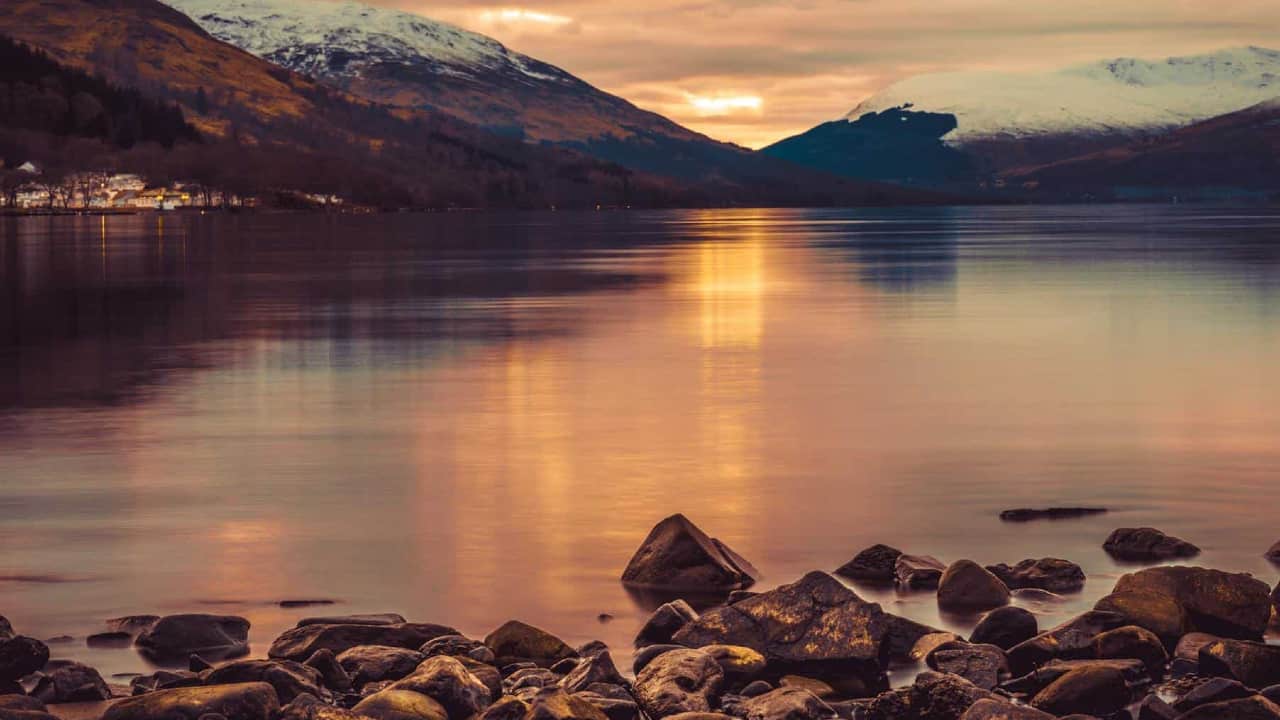Scotland’s most populous city sits in an enviable position – there’s no doubt about that. Besides the fact that Glasgow is renowned for its popular tourist attractions, vivacious energy, and legendary nightlife, this city is also an ideal base to explore Scotland from. From here, extraordinary places to visit include the world-known Loch Ness, the resort town of Oban, the Arran Island, the Ayrshire Coast, the Robbie Burns country, and, of course, the famous Scottish Highlands.
Gorgeous Loch Lomond, which lies on the border between Central Scotland and the Highlands, is even closer and is a great place for all those in love with biking and hiking. Another phenomenal place that one can easily reach from Glasgow is the famous Stirling Castle, together with a number of equally interesting manor houses.
No matter the time of year they visit, if tourists ever grow tired of Glasgow’s bustling city life and lively cultural scene – or if they simply want to see what else Scotland has to offer – there are numerous places outside the city that can be reached within a day. Here are the 15 best of them:
1. Loch Lomond & West Highlands
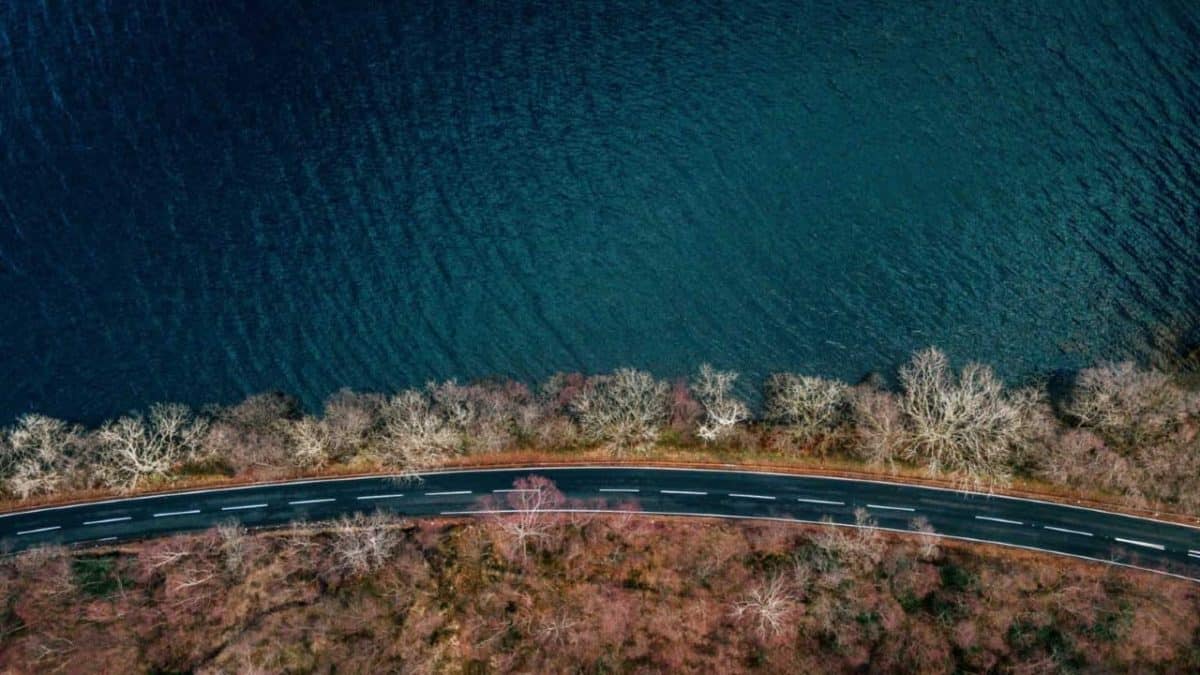
The world-renowned “bonnie, bonnie banks” of Loch Lomond are less than an hour away from Scotland’s most populous city. The country’s largest freshwater lake is located at the southern tip of Loch Lomond and the Trossachs National Park. The park itself is undoubtedly one of Scotland’s most charming regions – its breathtaking lochs and spectacular mountains are hard to forget. The West Highland Way goes along the full eastern side of the loch.
In addition to the romantic vistas and the haunting beauty of Loch Lomond, the lake is also a great place to engage in various outdoor adventures. Water sports enthusiasts from all over Britain come here to participate in their favorite activities.
On the other hand, the Cameron House (set to reopen in August) is a great place for golfers – if you’re one of them, make sure to pay a visit to the Carrick Golf Course there. This is one of the country’s best golf courses and one that features truly astonishing views of Scotland’s landscape.
If you’re more into lake cruises, you’ll be pleased to know that the Loch Lomond cruises depart from its southern end, from the village of Balloch. This village is also the home to the Sea Life Aquarium, which is an absolutely phenomenal family attraction, as well as to many interesting shops, pubs, and inns.
While it’s incredibly easy to reach this beautiful Scottish lake by train, folks can also go there by participating in one of numerous West Highland full-day guided tours. These often include attractions such as the Stalker Castle, the Kilchurn Castle, the town of Inveraray, and others. Loch Lomand is also one of our favorite places for day walks near Glasgow.
2. Loch Ness & the Scottish Highlands
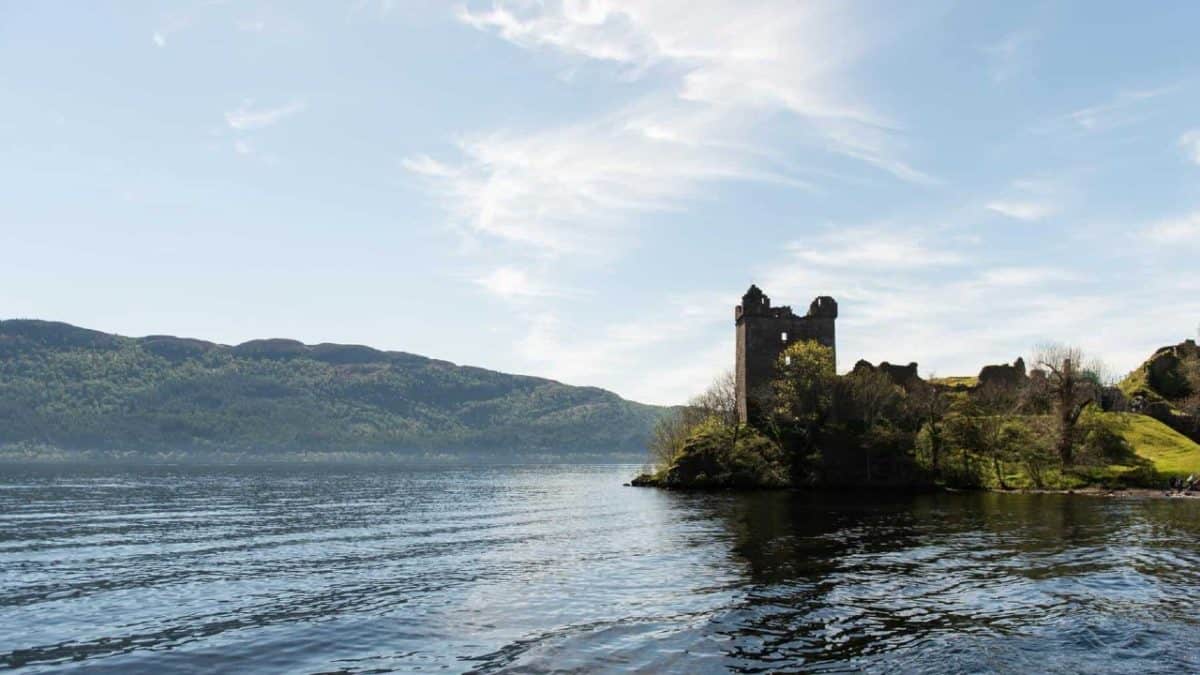
Let’s be honest – no serious trip to the UK’s northernmost country is complete without paying a visit to the world-famous Loch Ness. This breathtakingly beautiful lake is well-known for alleged sightings of the fabled sea serpent known as the Loch Ness Monster (“Nessie”).
The lake itself fills the Great Glen geological fissure and is exceptionally deep and long. The best way to enjoy its clean waters, steep green walls, and the amazing views of the rocky peaks surrounding it is via hour-long boat trips that can be taken from Inverness and Fort Augustus.
A lot of longer Great Glen tours stop in the village of Glencoe. This atmospheric, remote village is the site of the historic Massacre of Glencoe, where 30 members of the MacDonald clan were killed by the forces of the Scottish government in 1692. The whole area is filled with breathtaking scenery of tumbling waterfalls, fast-running rivers, rocky ridges, and high mountains. You will also get a chance to walk part of the Great Glen Way which goes along the length of the loch. If you are adventurous and are looking to stay overnight, there are great wild camping spots all over the Highland.
3. Isle of Arran
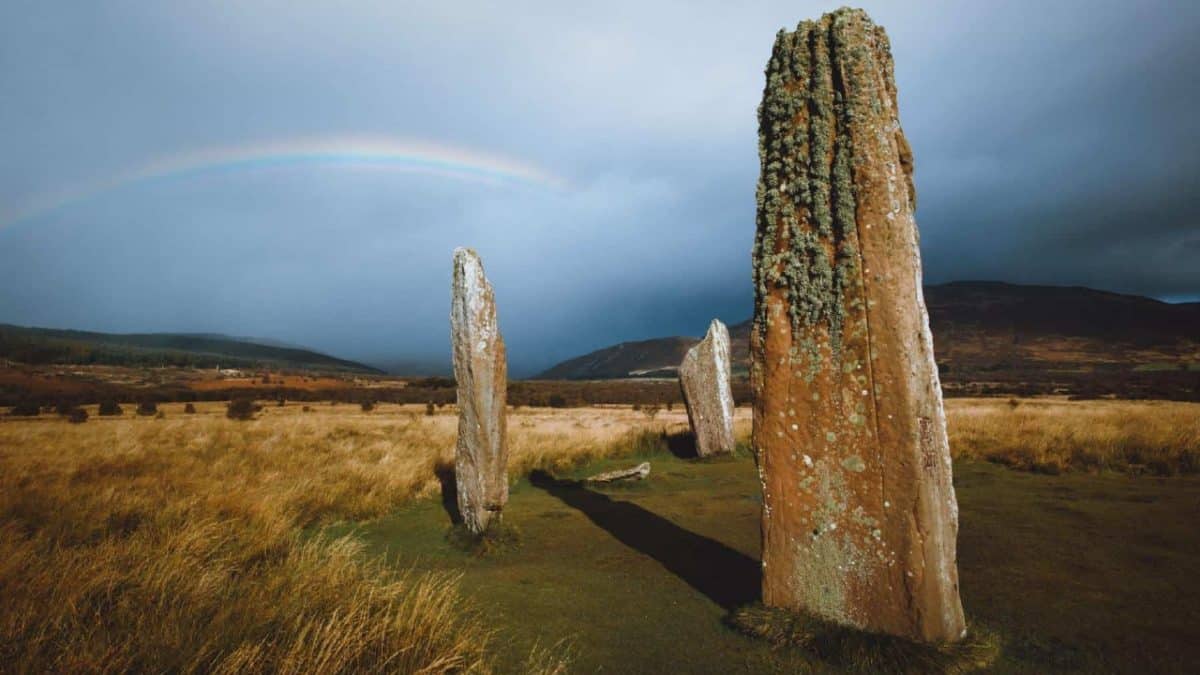
While it’s only 267 square kilometers in size, the charming Isle of Arran is also one of Scotland’s prettiest islands. In fact, a lot of people call the Isle of Arran “Scotland in miniature”, as it contains examples of almost everything that turns this country into such a great tourist destination.
Getting to the Isle of Arran is quite easy – you take an hour-long trip by train from Glasgow to Ardrossan, and then take an hour-long ferry ride from Ardrossan to the island. The Isle of Arran is marked by splendid beaches and mountains, as well as by an abundance of fishing harbors, castles, and wildlife.
Another amazing thing about this island is that it’s a great place for hikers. However, buses still run regularly around it, so it’s very easy to reach all the tourist attractions right from the Brodick ferry terminal.
While it’s true that Arran’s best places can be seen in a single day (such as the well-known Goat Fell Mountain or the magnificent Brodick Castle), you’ll want to properly explore this island’s wonderful sites by spending a couple of days on it. Read our Arran Coastal Way guide as well.
4. Stirling & Stirling Castle
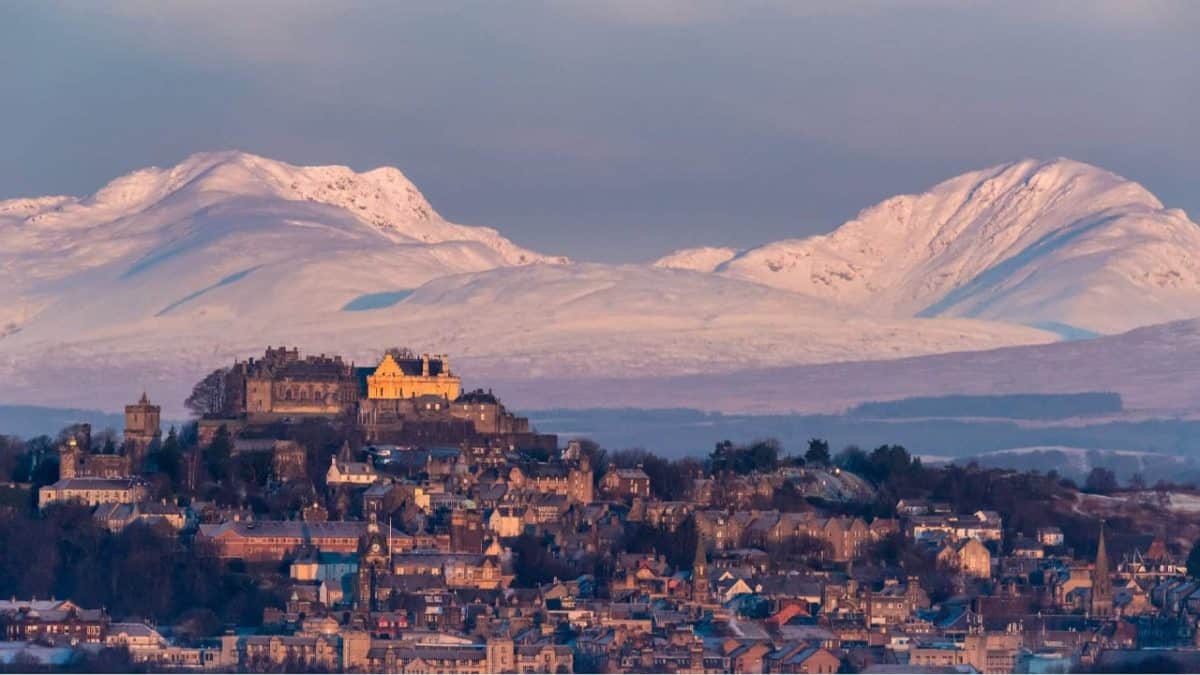
Only half an hour away from Scotland’s most populous city by train or car is the market town of Stirling. Have you seen the movie Braveheart? If you did, you’ll definitely want to pay this place a visit – this is where the famous Battle of Stirling Bridge (1297) took place, with the legendary William Wallace as the leader of the Scottish forces.
It is also the location of the Battle of Bannockburn (1314), which is featured at the end of Braveheart and which is one of the most celebrated Scottish victories over the English. Both this battle and the Battle of the Stirling Bridge are commemorated at Stirling’s marvelous Bannockburn Heritage Center.
One extremely important landmark of this region is the Wallace monument, which can be found between Stirling and the Bridge of Allan. Open to the public for an admission fee, this breathtaking tower provides spectacular views of the region and has three exhibition rooms where tourists can see various artifacts that belonged to William Wallace.
The striking Stirling Castle, on the other hand, is a spectacular 12th-century building that was constructed on the top of a volcanic craig. It is one of the largest (and most important) buildings of this type in the country and a major tourist attraction (it’s open to the public for an admission fee).
5. Benmore Botanic Garden
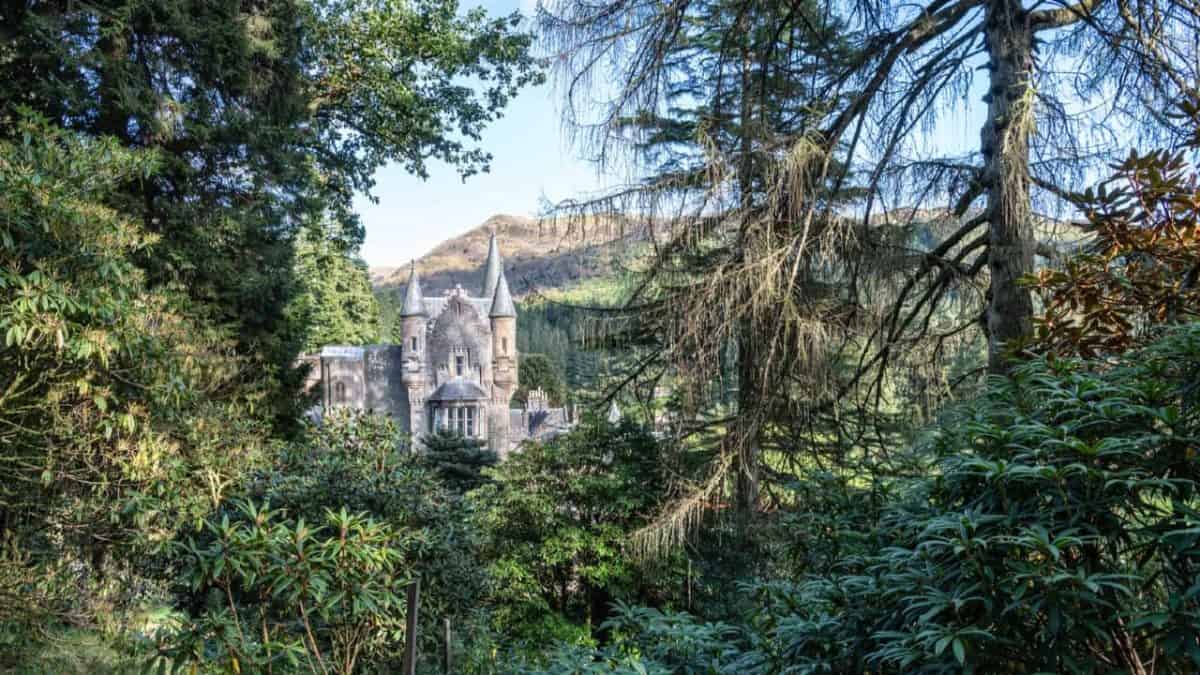
Located in the middle of a mountainous area north of Glasgow, the Benmore Botanic Garden is definitely a place worth paying a visit to. It’s a part of Edinburgh’s Royal Botanic Garden and a place where you’ll be able to see hundreds of different species of plants. In fact, coming to this site is a botanical wonder by itself – the long driveway to the property is surrounded by giant Californian redwoods that were planted all the way back in the 19th century.
Other attractions include A Boy With Two Dolphins, which is a bronze statue erected in 1875 (and donated by the master of the Benmore House), and the Pack’s Hut, a simple monument dedicated to the botanist Bayley Balfour. The Benmore House mentioned above is right next to the Benmore Botanic Garden and is now an outdoor learning center.
Another thing worth checking out while in the area is the Argyll Forest Park. A big part of it lies in the Loch Lomond and The Trossachs National Park, so you can expect a lot of wonderful natural sights there, one of which is the charming Puck’s Glen.
6. Outlander Day Tour from Glasgow
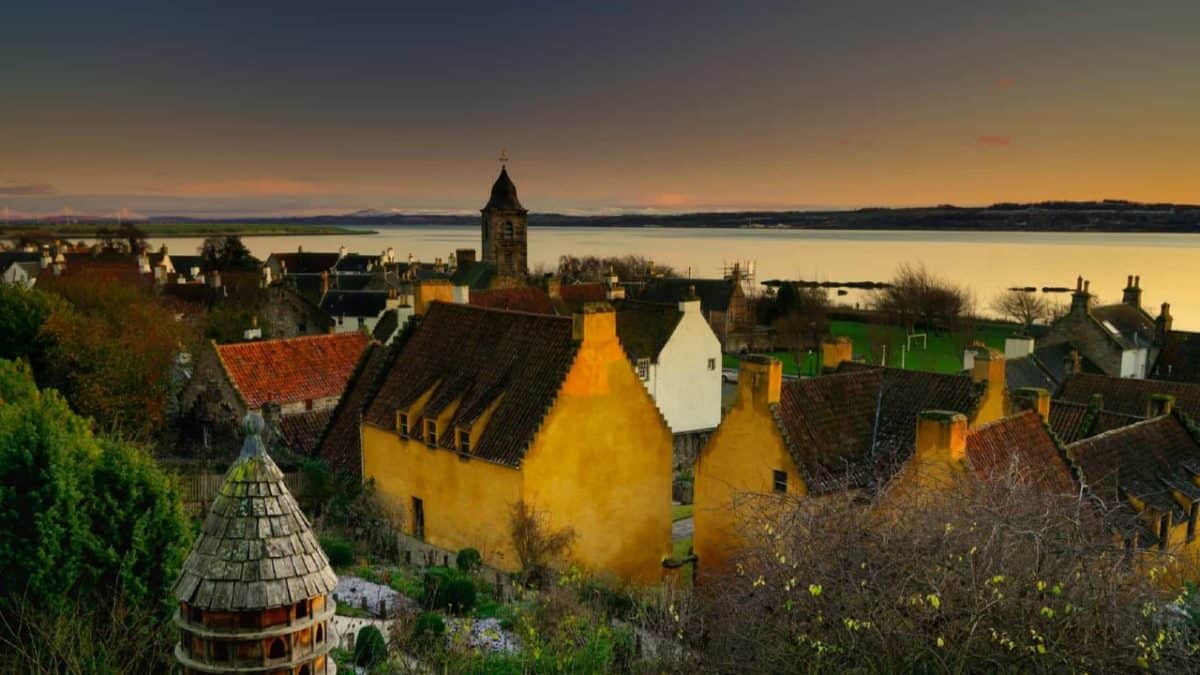
Are you a fan of the hit TV show Outlander? If that’s the case, one of the best day trips you can take from Glasgow is the Outlander Day Tour, which is offered by many tour agencies based in the city. In most cases, this is a genuinely immersive adventure that stops in various places that most fans of this TV series will recognize instantly.
For most fans, the tour’s highlight is undoubtedly the lovely village of Culross, which plays the role of the fictional village called Cranesmuir. With Culross being the tour’s very last stop, you’ll have a lot of time to explore the place – make sure to take a couple of selfies at the old village square, which dates all the way back to the 17th century.
Another remarkable location you’ll get to see on this tour is Doune Castle. Known as the Castle Leoch in the TV show, this well-preserved medieval stronghold was built in the 13th century. Besides the Outlander, the Doune Castle was also prominently featured in the 1975 comedy film Monty Python and the Holy Grail.
Another great place on the itinerary is the village of Falkland, which you’ll be able to explore at your leisure (and grab a bite of lunch!). Other stops include the Midhope Castle, the Blackness Castle, and the Linlithgow Palace.
7. Robbie Burns Country / The Ayrshire Coast
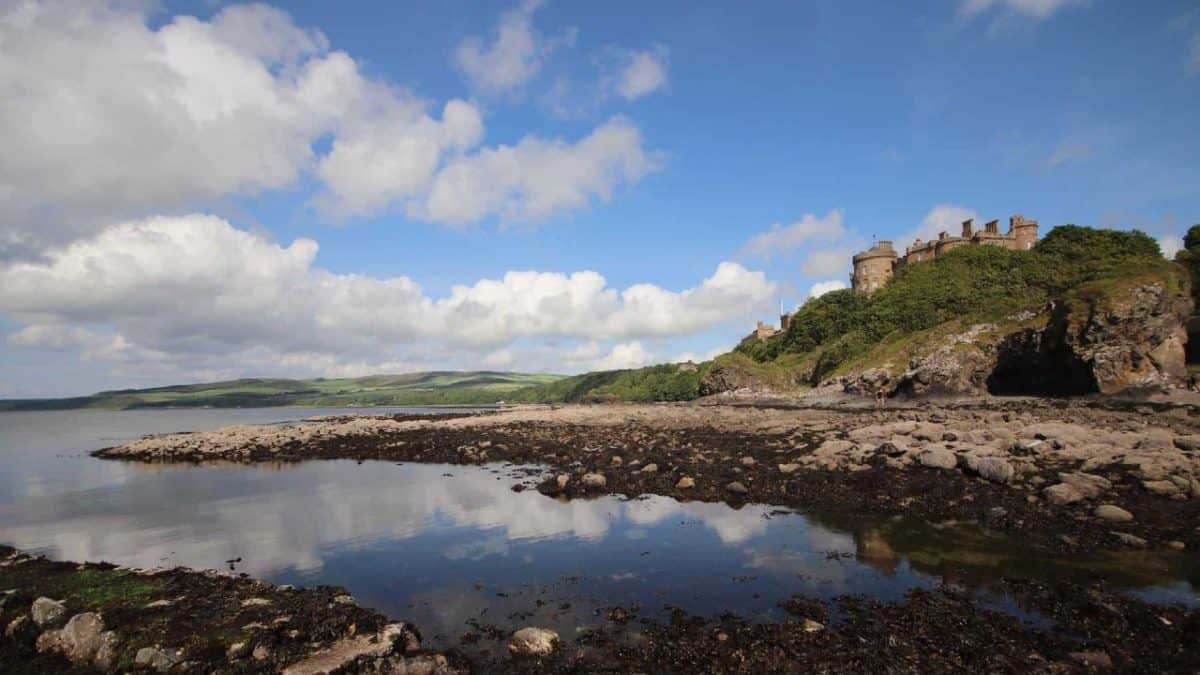
If you’re more interested in poetry than TV shows, you’ll definitely want to explore the countryside immortalized in the works of Robbie Burns, the national poet of Scotland. Doing this also means visiting one of the prettiest coastal regions in the country – the Ayrshire Coast.
The very first stop on this day trip should be the village of Alloway, where the Robert Burns Birthplace Museum is located. Here, you’ll be able to see a well-preserved thatched house in which Robbie Burns has spent his childhood before moving to Mount Oliphant Farm.
The next stop of this tour is the burial place of Robert’s father – Auld Kirk. After that, this circular tour takes tourists to the Robert Burns House in Dumfries, where the poet spent his last days before an early death at the age of 36, in 1796. His grave, on the other hand, can be found in the churchyard of the nearby St Michaels & South Parish Church.
While visiting the Ayrshire Coast, make sure to see the Culzean Castle and the Country Park, too. The castle itself is said to be home to a couple of ghosts, including a servant girl and a piper. The park, on the other hand, is planted with beech and conifers and features things like fruit-filled glasshouses and flamboyant formal gardens.
8. Newark Castle
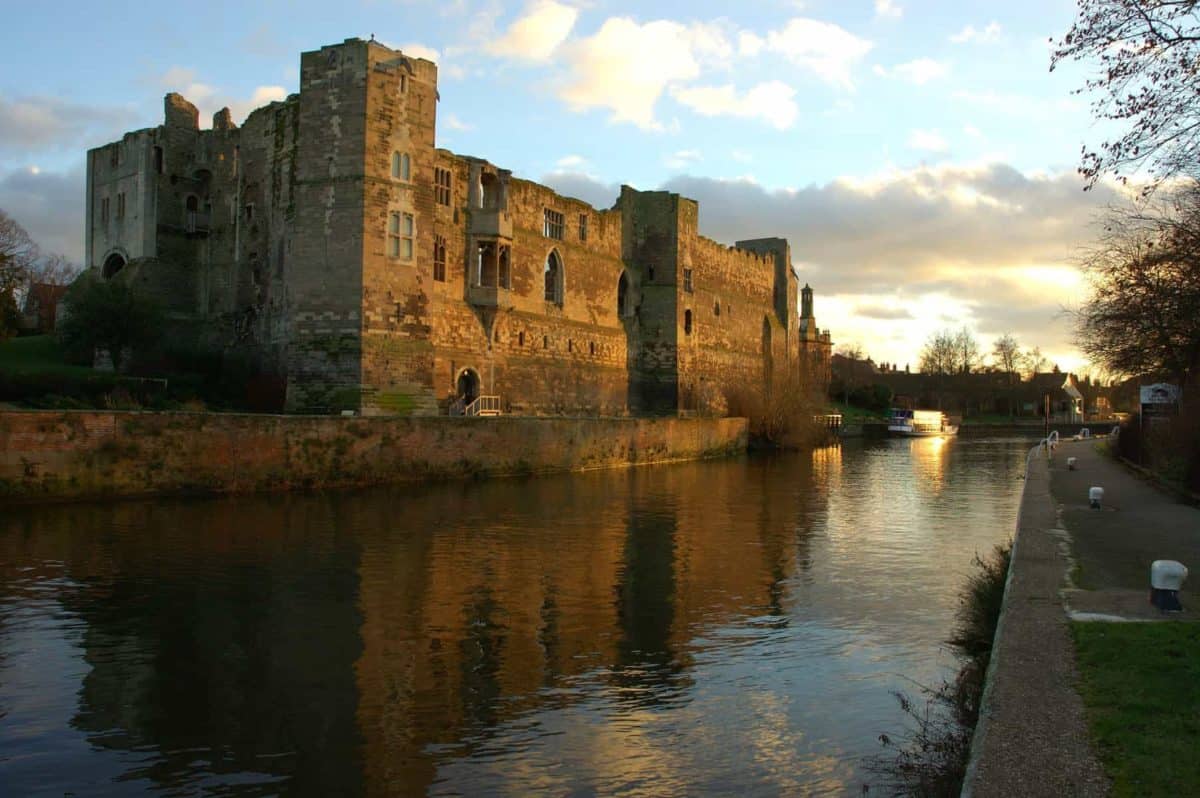
Less than 30 miles away from Glasgow’s city center is the industrial town of Port Glasgow, where you can find a well-preserved building that was built all the way back in 1478 – the Newark Castle. The stately home, with its tower and the gatehouse, was the seat of the powerful Maxwell family, whose last member died in 1694.
While the rooms in the Tower House cannot be accessed by visitors, one can still pay a visit to many of the castle’s other rooms, most of which have exhibits concerning the lives and working conditions of the family’s staff. You will also be able to admire the castle’s charming Jacobean exterior.
Another industrial center worth paying a visit to is Greenock, which lies on the southern bank of the River Clyde and is only 25 miles away from Glasgow. The most renowned Greenlockian is undoubtedly James Watt, but the town is also well-known as the final resting place of Mary Campbell, who was immortalized by Scotland’s national poet Robbie Burns as “Highland Mary”.
9. Oban & West Highlands
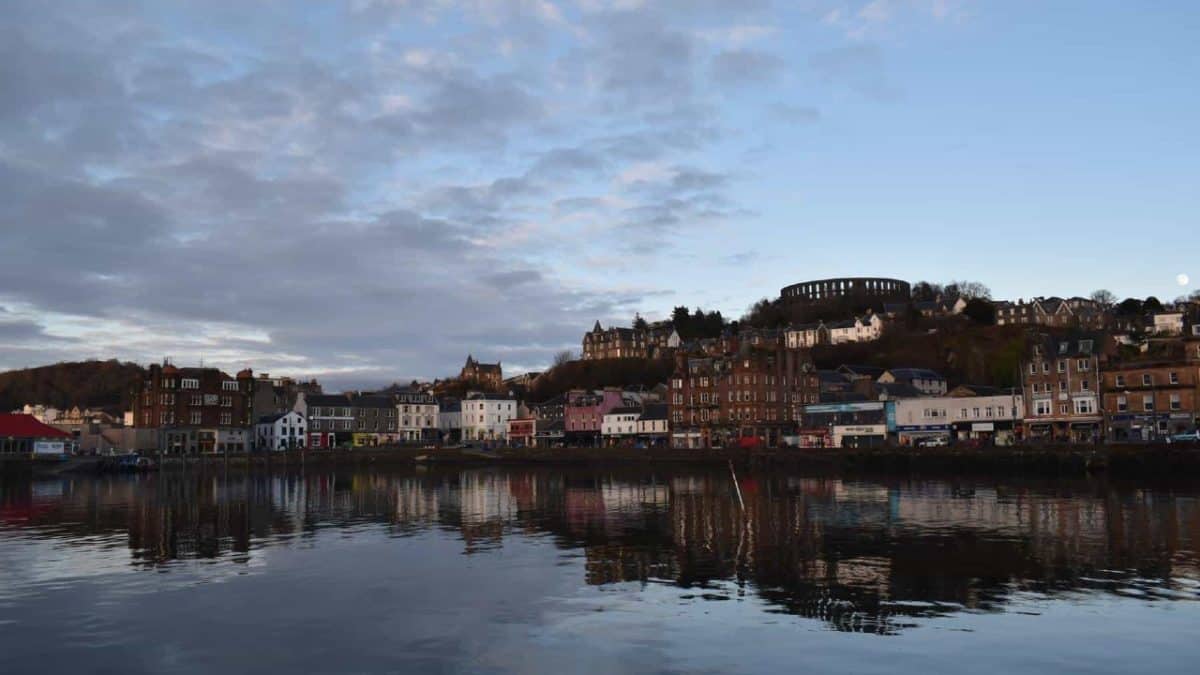
Known to many as the country’s seafood capital, the coastal Victorian town of Oban is the primary port for ferries that connect the Hebrides, the Isle of Mull, and the Isle of Skye with southern Scotland.
To get a stunning view of the entire town and its harbor, make sure to pay a visit to the McCaig’s Tower, which was erected between 1897 and 1902 and looks just like the Colosseum in Rome. On clear days, one can see all the way to the aforementioned Isle of Mull from the top of the structure.
The route from Glasgow to Oban goes through a region filled with castles, lochs, moors, and mountains – it’s a scenic countryside you surely won’t forget anytime soon. During this trip, one can also visit a couple of scenic lakes, including Loch Lomond, Loch Awe, and Loch Fyne.
10. Dumbarton Castle
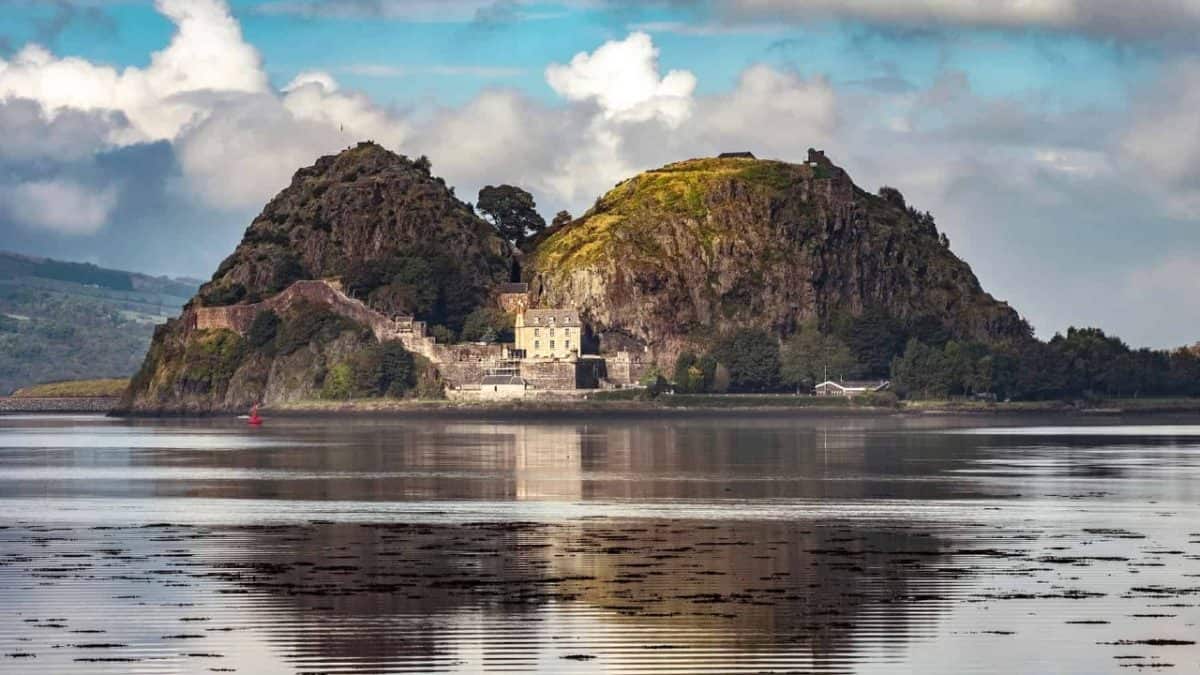
The Dumbarton Castle is located on the northern bank of Clyde, some 20 miles away from Glasgow. It sits right between the river and the dramatic basalt rock behind it and thus has a strategically important position.
Out of all strongholds in Scotland, this one has the longest recorded history. For some time in the Early Middle Ages, Dumbarton was the capital of the Kingdom of Strathclyde (also known as Alt Clut). Unfortunately, not much survives from this time period, with most of the existing structures being built a thousand years later, in the 18th century.
If you decide to visit Dumbarton Castle, you’ll be able to see the Governor’s House and its fascinating artifacts, as well as the mighty Georgian artillery fortifications. Of course, wonderful views of the surrounding area are guaranteed.
11. Falkirk Wheel / Forth & Clyde Canal
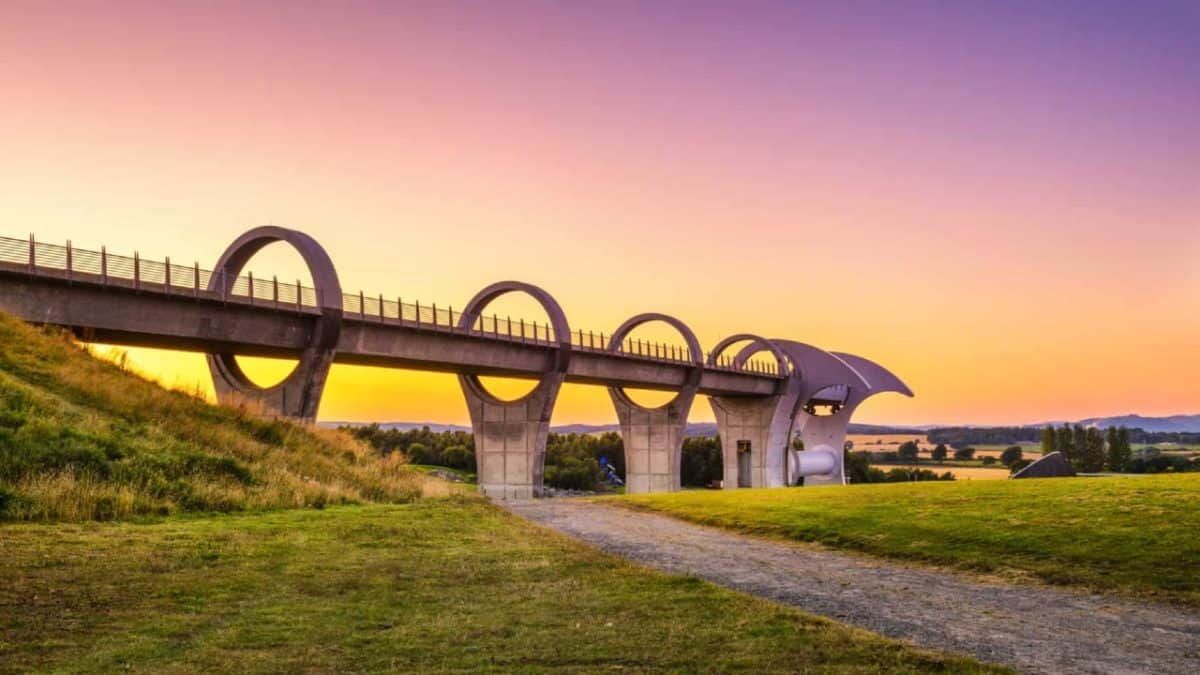
Built at the very end of the 18th century, the Forth and Clyde canal flows through the Strathkelvin District, in the north of Glasgow. This 35-mile long canal was always crucially important for all the seagoing vessels in the area, as it connects the Firth of Forth in East Scotland with the Firth of Clyde in the west of Scotland. Nowadays, folks can enjoy pleasant canal cruises on vessels that depart from Kirkintilloch.
Make sure to find some free time to pay a visit to the Falkirk Wheel, though. Situated on the canal’s eastern end, the Falkirk Wheel is a genuinely unique achievement of modern engineering and a structure that can carry up to eight boats. This interesting mixture of a boat lift and a sculpture connects the Edinburgh and Glasgow Union Canal with the aforementioned Forth and Clyde Canal.
Tourists can expect an hour-long journey aboard special vessels. Those who want to learn more about the canal’s operation can do so at the visitor center. If you really want to know more about the Forth & Clyde Canal, make sure to participate in one of the behind-the-scenes tours.
12. The Hill House, Helensburgh
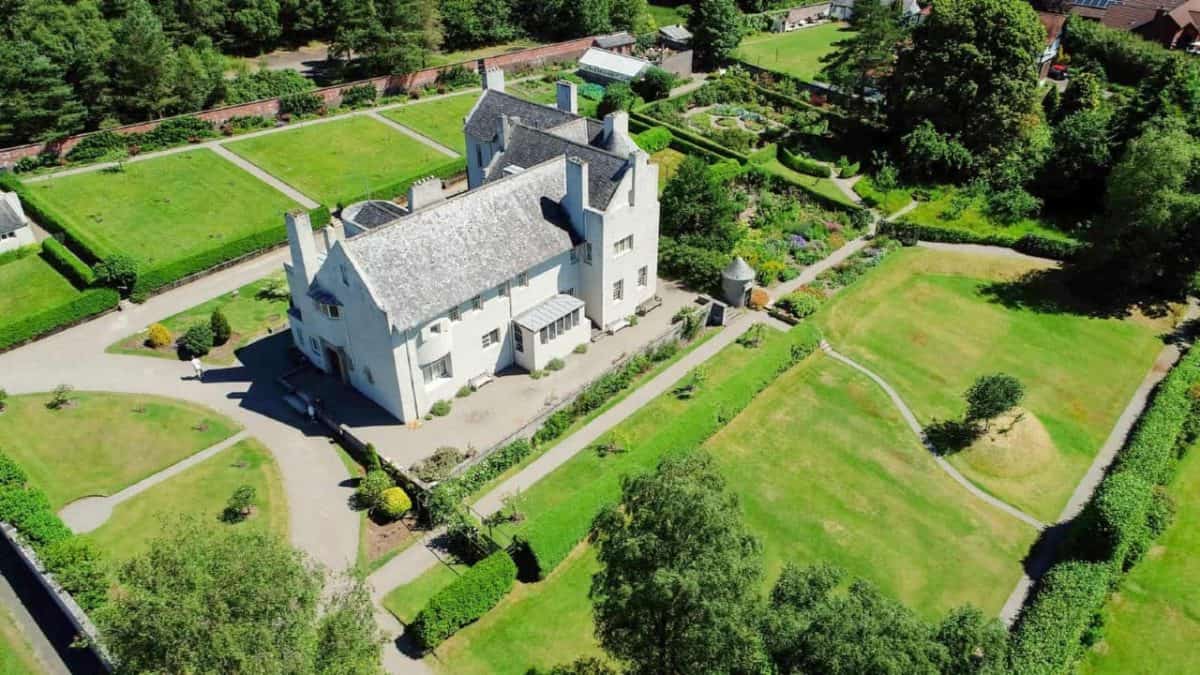
Are you a fan of the Art Nouveau style? If so, your best bet is to go to Helensburgh (25 miles away from Glasgow) and pay a visit to the Hill House. Built all the way back in 1904, this charming house was designed by Charles Rennie Mackintosh, an influential Scottish architect.
The Hill House is surrounded by a beautiful garden and looks much like many of the fortified manor houses in Scotland. However, it bears a plethora of Mackintosh’s hallmarks, such as small chimney stacks, oriel windows, rounded edges, and various figural elements.
One particularly interesting thing about the Hill House is that it’s currently the target of the “Hill House Box” project, which is, as the name suggests, the construction of a massive steel frame that will encase the building. This steel frame is a genuine architectural wonder whose job is to protect the Hill House from the weather and allow its walls to dry. Visitors are allowed to climb this structure from the inside and look at the house from above.
Visitors can go inside the Hill House itself as well. There, they can see elegant Art Nouveau patterns combined with delicate pastel shades and dark wooden panels. However, none of these elements make the interior look kitschy – it is, rather, both minimalistic and cozy, as strange as that may sound.
Charles Rennie Mackintosh was well-known for his “white rooms”, and the one that you’ll get to see in the Hill House (the bedroom) is undoubtedly his most successful. On the other hand, the architect’s wife, Margaret MacDonald, designed a stunning fireplace and many of the textiles inside the house.
13. Granny Kempock’s Stone, Gourock
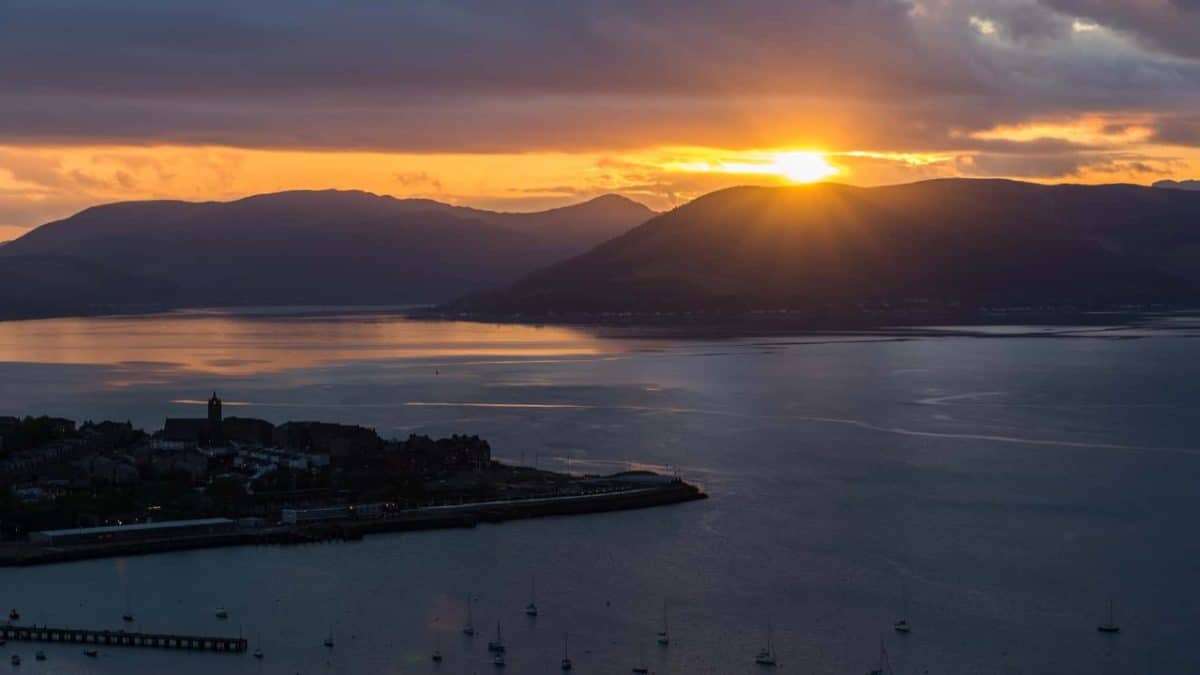
Almost 30 miles west of Glasgow, in the town of Gourock, there is a six-foot-tall megalithic monolith standing on a cliff. Bearing the name of Granny Kempock’s Stone, this monolith is said to have been a rendezvous point for Scotland’s religious leaders – the druids.
Also, back in the day, Gourock’s sailors and fishermen were walking seven times around the Granny Kempock’s Stone in order to ensure good fortune on their voyages. Even today, a lot of people from these parts tend to walk a few circles around the stone for good luck, especially the local newlyweds.
Another place of interest worth visiting is the “Girl on a Suitcase” statue, as well as the town’s main shopping street – Kempock Street. If nothing else, the views across the Clyde Estuary can turn the trip to this quaint town into a worthwhile outing. The best time to visit Gourock is in May – that’s when the Gourock Highland Games are held.
14. Paisley Abbey / Thomas Coats Memorial Church
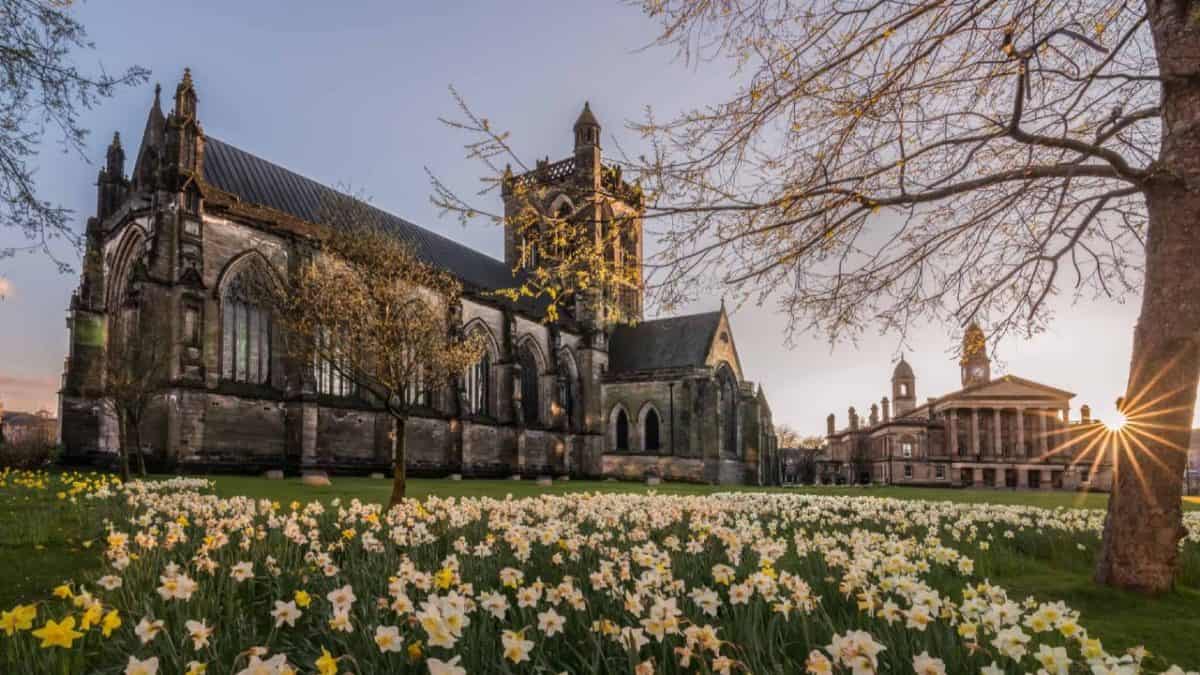
Some of the surviving parts of Paisley Abbey, located in the town of Paisley, Renfrewshire, date all the way back to the 12th century. Paying a visit to this magnificent medieval church means walking almost 200 steps to its tower and seeing its enchanting choir stalls.
Another church worth visiting while in Paisley is the Thomas Coats Memorial Church, which is on the other side of River Cart. Completed at the end of the 19th century, this church was funded by one of the country’s leading textile manufacturers and features some of the most intricate stonework one can see in Scotland.
Before you leave Paisley to go back to Glasgow (which is only 10 miles away, by the way), make sure to visit the Paisley Museum and Art Gallery, too. Here, you’ll be able to see lots of compelling displays concerning the local textile industry and learn more about the well-known Paisley Pattern. Visitors can observe embroidered and woven shawls from India, old looms that were once used in manual textile production, and many other interesting exhibits.
15. Summerlee Museum of Scottish Industrial Life
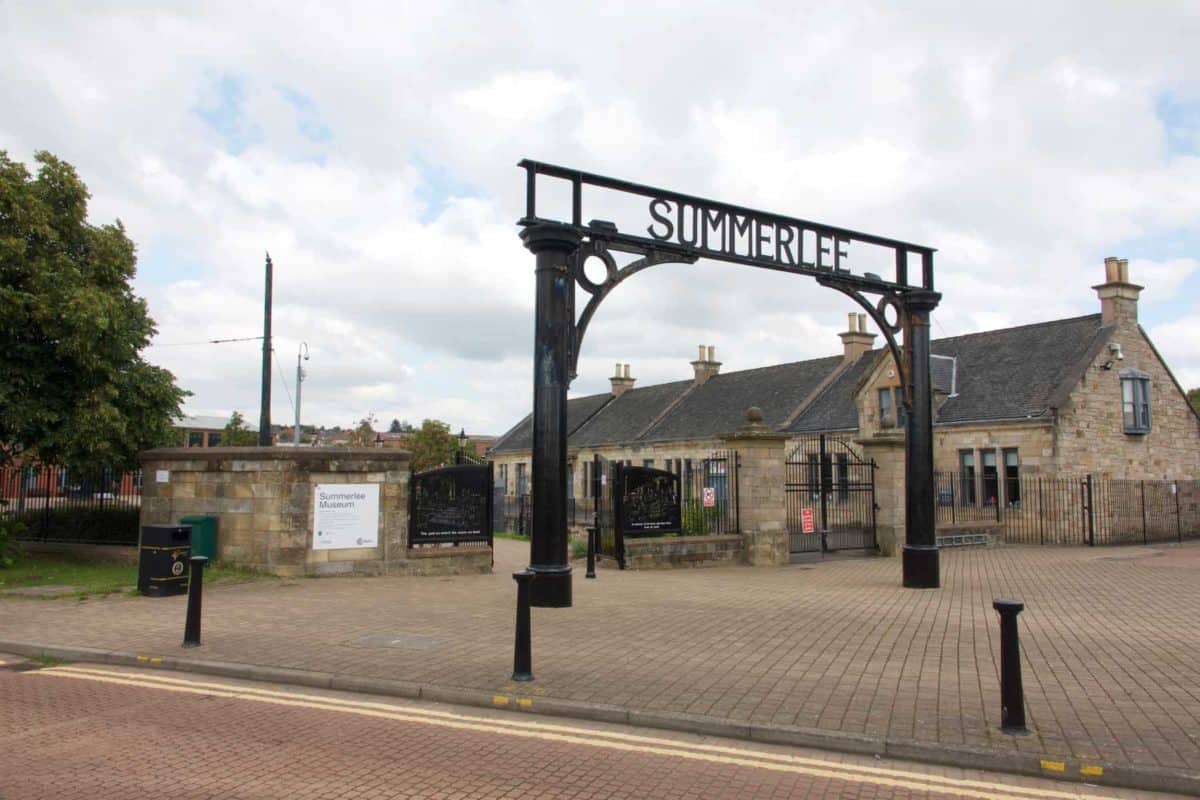
Formerly known as Summerlee Heritage Park, this stunning museum is located on the site of now-defunct Summerlee Iron Works. One of the earliest adopters of the so-called “Hot Blast Process”, this company was one of the area’s biggest employers for a century – from the 1830s to the 1930s.
Nowadays, this museum offers an enjoyable time for both adults and kids, with exhibits such as the Victorian steam engines, workers’ cottages, a recreated mine, and a vintage tramway. Covering 22 acres of land, the museum also has a sweet shop, a gift shop, and a cafe.

I love hiking, backpacking, and camping. From the Camino de Santiago to the West Highland Way in Scotland or simply a great day hike on the weekend. Hiking refreshes me, my mind, and keeps my body reasonably fit. So far I have walked three Camino routes and many other long distance hikes in the UK, Canada, and around the rest of Europe. One of the best was my hike up Ben Nevis.

